#used ford motor for sale
Text

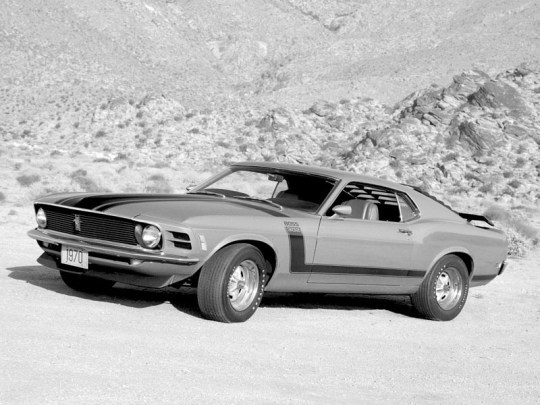
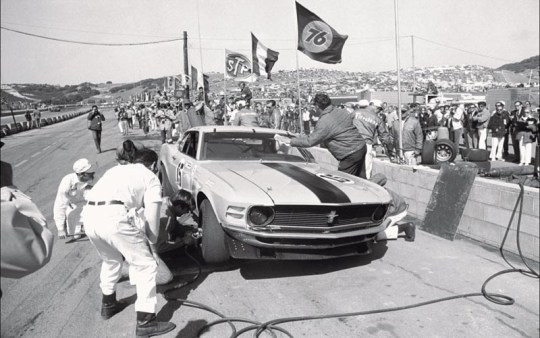
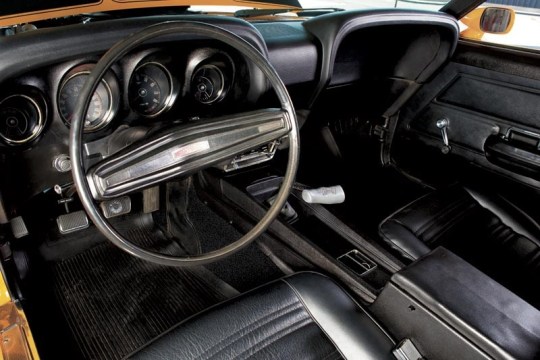
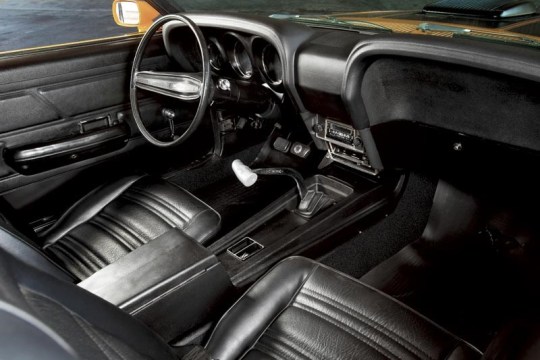



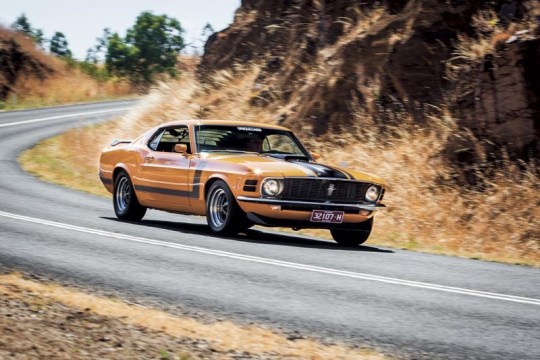

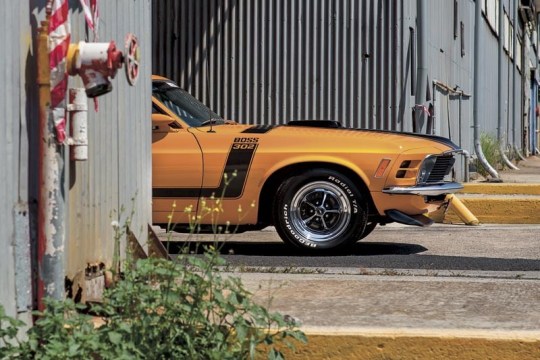
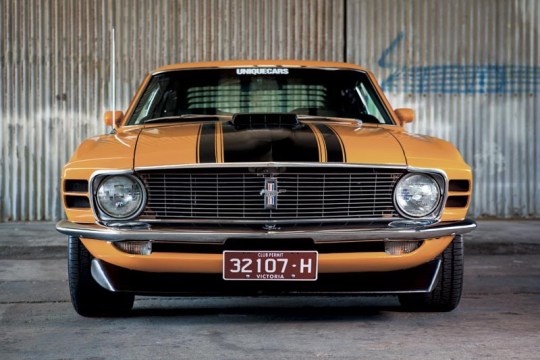

FORD MUSTANG BOSS 302
BOSS-A-NOVA!
They called it The Boss and for two short years it ruled the muscle car scene in the US, establishing itself as one of the greatest road and race cars of the era. Now, it’s one of the most collectible.
In 1960s US street lingo, if something was ‘boss’ it was cool, tough, the best. And the 1969 Boss 302 Mustang wore its badge with pride. It launched just four and a half years after the first Mustang was revealed to critical acclaim and record sales. Yearly updates to keep Mustang fresh in the face of tough new challengers from General Motors and Chrysler (particularly the Camaro) resulted in the once lean and pretty ’Stang muscling up, both in body shape and under-bonnet brawn, and the 1969-70 Boss models were the zenith of Mustang styling.
Thereafter, Mustangs became increasingly bloated and anaemic as the 1970s fuel crisis and stricter pollution laws cut horsepower and stylists lost their way; the rippling flanks and thrusting nose of the late 60s/early 70s cars gave way to boxy, bland designs. That early look would not be recaptured until 2005, when new Mustangs were given retro styling.
The Boss 302 was launched at the same time as its big-block brother, the Boss 429. Both were positioned as competition specials; Ford wanted to homologate its 302-cuber for Trans-Am and the 429ci monster for NASCAR. In fact, Ford went wild with engines between 1969-70, offering nine V8s – the ‘economy’ 302, 351 Windsor, 351 Cleveland, 390, 428 Cobra Jet, 428 Super Cobra Jet, 429 ‘wedge’, Boss 302 and Boss 429.
For the Boss 302, Ford’s high-compression 302ci small-block V8 was beefed up with four-bolt main bearing caps and redesigned ‘Cleveland’ cylinder heads with bigger inlet and exhaust valves, and ports that allowed the engine to breathe more efficiently.
These ‘semi-hemi’ heads were based on the Ford 427ci racing engine’s combustion chambers, and a balanced forged steel crankshaft and forged steel conrods allowed the engine to handle high rpms for sustained periods. A single 780cfm four-barrel Holley carburettor sat atop a high-rise aluminium inlet manifold, while a dual-point distributor, high-pressure oil pump, windage tray and screw-in welch plugs were further indications of its competition intent.
A rev limiter was fitted, progressively cutting spark from 5800rpm to 6150, but it was easily bypassed and the Boss 302 could reportedly keep making power up to 8000rpm with minor mods. In the muscle car marketing war, Ford claimed a peak horsepower figure of 290bhp at 5800rpm (the same as the Camaro Z/28), but that was extremely conservative.
Two four-speed manual Top Loader transmissions were available: a wide-ratio ’box with Hurst shifter more suited to street and strip use, and a close-ratio unit for racing. Adding to the race or road options list were four diffs: the stock 3.5:1 nine-inch, Traction-Lok 3.5:1 and 3.91:1 and the No-Spin 4.30:1 built by Detroit Automotive. Axles and diff centres were also strengthened to take the loads.
Suspension was also race-inspired with heavy-duty springs, shocks and sway bar up front, and Hotchkiss-style rear suspension with heavy-duty leaf springs, sway bar and staggered shock absorbers. The left-hand shock absorber was bolted behind the axle and the right in front, to reduce axle tramp under acceleration. Amazingly for such a high-performance car, braking was still only discs and drums with power assistance.
Ironically, the Boss 302’s sexy shape was styled by former General Motors designer Larry Shinoda, who is often credited with coming up with the Boss moniker. When asked what he was working on, he replied, "The boss’s car", a reference to new Ford president ‘Bunkie’ Knudson, who was also ex-GM and had recruited Shinoda to Ford.
While the wheelbase remained unchanged at 2740mm, the ’69 Mustang was 96.5mm longer overall to accommodate all the V8s offered, although the big-blocks still had to be shoe-horned under the bonnet. Shinoda’s ’69 Boss 302 was also one of the first production cars to offer an optional front air dam and adjustable rear wing, and his use of high-contrast black panels, rear window SportsSlats, and go-faster stripes made the Boss a real attention-grabber. The ’69 was also the only quad-headlight Mustang, a feature that was dropped for 1970 models.
In 1970, American Hot Rod magazine dubbed the 1970 Boss 302 as "definitely the best handling car Ford has ever built", while the conservative Consumer Guide called it "uncomfortable at any speed over anything but the smoothest surface". Unique Cars resident Mustang maniac, ‘Uncle’ Phil Walker, never read the Consumer Guide review, but even if he had it wouldn’t have stopped him buying the immaculate 1970 Grabber Orange Boss 302 you see here.
Phil already has his beloved 1966 Shelby GT350H, but the Boss 302 really got his Mustang juices percolating. And he wasn’t alone, because the first Boss he saw, some 43 years ago, is still one of Australia’s most iconic race cars: Allan Moffat’s Trans-Am racer. Phil remembers it clearly.
"I saw Moff race it Calder and I was inspired to own one," Phil recalls. "It was the most aggressive-looking car; its stance was something you had to see to believe. It looked like it was doing a million miles per hour when it was parked.
"My Boss was originally a one-owner car and I bought it from a friend of mine in California, Dave, who I also bought my Shelby GT350H from 19 years ago. Dave found it in a barn with a blown engine, but in otherwise pretty good condition.
"The lady who owned it from new didn’t realise it had a high-compression engine and had run it on standard fuel. When it blew up she just parked it.
"Dave did a nut-and-bolt restoration over two years, then put it up on his hoist. He didn’t want to sell it, but I got my way in the end – unfortunately he had the last say on the price (laughs). I didn’t even bother to test drive it; I knew it was a good car. It had 21 (new) miles on the odo when I picked it up and only 54,000 miles in total."
Since then, Phil has only put a couple of hundred miles on the car, but that’s enough for him to have bonded with it.
"I’ve only had the Boss since January and it’s growing on me. It’s different to the Shelby. It’s bigger and very low.
"The engine is incredible. Dave is one of the best engine builders in California and when he rebuilt the 302 he changed the cam spec. US camshaft technology was okay in the 60s and 70s, but if you had a big-cam muscle car they wouldn’t idle and they were terrible for driving in cities.
"A proper Boss engine can rev to 8500rpm all day and for a V8 that’s pretty serious. But they’re not renowned for low-down torque; it starts coming on from 3500rpm. My car still has a solid-lifter cam, but it pulls like a train from 1200rpm in top gear and I can drive it around at 1500rpm in top all day.
"It’s got the four-speed close-ratio Top Loader with the long first gear and with a 3.7:1 rear end it does about 55-60mph (89-97km/h) in first gear. It bloody goes!"
Phil is a fussy bugger and his cars have to look just right, so Russell Stuckey from Stuckey Tyres has ordered him a set of genuine 15 x 8 Minilites from England to replace the standard Magnum 500s.
"I want it to look like the Parnelli Jones race car, and to get the stance I want it’s going to have 275/60s on the rear and 255/60s on the front. At the moment it’s a pretty car that is tough, but I want a tough car that looks tough. And that’s all I’m going to do to it."
After his first real fang in the Boss, Phil felt that his Shelby would be half a lap in front at the end of a 10-lap sprint at Sandown, but now thinks the Boss would be quicker. We might have to put both to the acid test one day. What do you mean "no way", Phil?
It was a nervous Phil who turned up at a Melbourne storage facility in January to pick up his new Boss 302. So nervous, in fact, that he took along Unique Cars art director Ange and a sturdy tow rope – just in case.
The storage people were even more apprehensive – they had been warned about just how anal he is with his cars, as he explains: "The lady there said, ‘You must be pretty fanatical because we’ve been given strict instructions that no one is to touch the car except you’." Fortunately, the car arrived in pristine condition.
"I was pretty excited, I’d been waiting for seven weeks," Phil laughs. "I took the car cover off it, fired it up, and it drove home like a brand new car. It was as good as I thought it would be. I spent the next three hours washing it."
Sounds like our Phil.
PARNELLI AND ME
Three years ago, my mate Dave and I were invited to a Trans-Am dinner at Portland International Raceway where Dave was racing his 1970 Trans-Am Boss 302 and I was crewing for him.
When we were driving there we noticed this black Mercedes following us. When we stopped it did too and this bloke got out and said, "I noticed you guys back at the hotel. You’re going to the Trans-Am dinner aren’t you? I’m lost." It was Parnelli Jones!
I jumped in with him and when we got there I ‘invited’ myself onto Parnelli’s table, which also included Pete Brock – the guy who designed the Shelby Daytona Coupe. There was I, Mr Nobody, with all these US racing heavies, but Parnelli was a real gentleman, not up himself in any way.
The next day they had free lap time at Portland and, when I saw Parnelli there with Ford’s new ‘Parnelli Jones’ Boss 302 tribute Mustang, I asked if there was any chance of a ride and he said jump in. We did 10 laps and the guy hadn’t lost any of his ability; my eyes were getting bigger and bigger coming into the corners.
It was a great experience that I’ll never forget. – PW
IT's MINE...
Moff’s Mustang is probably the most iconic Australian racecar and after seeing it I was inspired to own a Boss Mustang.
Then, about 25 years ago, I went to Pebble Beach in Monterey for the first time and saw a 1970 Grabber Orange Boss 302, which was the colour Parnelli Jones raced in Trans-Am. That day I knew I had to own a Boss. It was the car I’d always wanted after my Shelby, which was my lifelong dream car.
My Boss 302 is fully optioned, including the Shaker, extra side mirror, tacho and rear louvres, and it’s got a lot of wow factor. When you drive down the freeway, you get the thumbs-up from all sorts of different people. I think it’s the colour.
It’s closer to show standard than my Shelby. It’s got the paint marks on the tailshaft and all the little concours details, but I’m never going to show it; I’m not into that.
The 1969/70 body shape is still the best. Ford got it right then, but lost the plot after that and it’s reflected in their collectibility today. – PW
#car#cars#muscle car#american muscle#ford#FORD MUSTANG BOSS 302#ford mustang#boss 302#MUSTANG BOSS 302#mustang
155 notes
·
View notes
Text

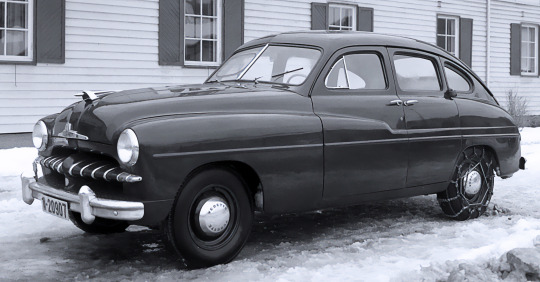

Ford Vedette, 1948. Another new car for the 1948 Paris Motor Show, made by Ford’s French subsidiary Ford SAF. The Vedette had originally been conceived by Edsel Ford and Ford designer Eugene T. "Bob" Gregorie as a “light” Ford model for the US market. However as Ford plans developed during the 1940s the “light” model had become superfluous so was given to the French instead. It was powered by a Poissy-made 2158 cc Aquillon sidevalve V8 engine of Ford's Flathead engine family. Ford SAF never achieved satisfactory sales and their Poissy plant also suffered industrial unrest which led to Ford selling their factory and model range to French car maker Simca in 1954.
157 notes
·
View notes
Note
Is Princess Kate a bit spoilt? She kinda has to be, right? Do she and Anthony clash over that, even after they are properly together?
I think she is, yeah. She’s grown up with the best of everything and it’s not really a secret that she has her Appa (you know, the king of the entire country) wrapped firmly around her pinky. She’s pretty well used to getting whatever she wants whenever she wants it. And I think sometimes that frustrates Anthony.
Because there are rarely any consequences to the things she does, not really. Not the way there are for normal people. Anthony’s family is fairly well off, they weren’t poor growing up but he definitely couldn’t afford to walk into a store and buy whatever he wanted. Unless that store was a Primark.
So it’s a little uncomfortable for him when they’re first officially together and he says he needs to get a new suit for an event they’re attending. He wants to look his best, because the public’s still very much getting used to the idea of them together and this is their first big event. A dinner for a charity Kate’s the chair of. He already feels self conscious about the fact that the nerves in his Left arm will never properly heal to give him any great motor function and now here he is, being greeted at the door of Tom Ford like he’s an old friend.
“Your Royal Highness.” The sales associate greets Kate with an awkward bow before turning to him, “Mr Bridgerton.”
It’s still odd to him, that he can stand beside Kate now, rather than three steps behind. That he can feel her fingers knotted with his as she takes off her sunglasses, her eyes flicking down to read the associate’s name tag with a smile.
“Carrie, it’s lovely to meet you. I wonder if you can help Anthony and me. We’re looking for a suit.”
“Of-of course.” Carrie said quickly ushering in my them over to the section, asking an under questions none of which Anthony is really listening too because he’s so busy wondering if he can afford this. And even if he could it dawns on him that it won’t be just this suit. It’ll never be just this suit. There’ll be hundreds more just like it that he’s expected to wear. When already felt uncomfortably out of place here with the sleeves rolled up on his rugby jersey and his slightly muddy sneakers squeaking against the floor.
“Anthony?” Kate caught his attention, her face frowning and he realised he had no idea what she was asking. “Are you alright, babe?”
Anthony nodded, swallowing. “Sorry, I- what was that?”
“I said I like the Royal blue, or the grey and white tweed sort of pattern. Though tweed’s not very traditional for this sort of thing.”
He wouldn’t have even known that. He glanced around, “Ah, I like the blue.”
They were ushered away into the kind of changing room that Anthony had spent the last few years waiting outside for Kate. One that’s not just a curtain and a partition. There’s champagne and a bonafide snack table, while a person flits around you, checking the fit of everything.
It’s a nice suit. Anthony even likes the way he feels in it, he likes the fact that the man in this suit looks like he belongs beside the woman sipping champagne on the sofa beside him, in the way the man wearing a Harlequins jersey his baby sister had bought him didn’t. But he still feels awkward and out of place as Carrie hums,
“Do you prefer a waistcoat?”
Anthony blinked at her, “I… didn’t when I was… when I usually wore a suit.” He stopped short of saying it wasn’t his uniform. Something everyone in the room must have known. And swallowed thickly, “I don’t know if I need one.”
He hated that he had to look to Kate who shook her head, “It’s not very formal. No waistcoat, no tie if you don’t want.”
He suddenly just wanted everyone else gone. He wanted to be alone to figure out how the hell he was supposed to get out of buying a £5500 suit. He swallowed, “I think the blue shirt’s too much. Could I try another few colours, please?”
Carrie nodded and left the room and Anthony stared at his reflection panic building in his chest.
Kate wrapped her arm around his waist and kissed his cheek, sighing, “Handsome.”
That wasn’t helping. That made him want to buy this and spend the next few months of his life living on tinned beans and cereal. Just to make her happy.
Anthony tried to smile, but it looked like a grimace when he caught sight of it in the mirror. “Thanks.”
Kate’s brow furrowed, “You don’t like it?”
“I… it’s a nice suit.”
“Do you want to try something else? Do you want to go somewhere else? We could try Dolce?”
Anthony nearly laughed, “Kate, honey, I can’t…” he bit it off, “I don’t want to trouble anyone.”
Kate chuckled, “It’s not any trouble.”
He sighed, leaning away from her touch, “Kate, I don’t want to go there because I can’t afford it. I can’t even really afford this suit.”
He’d thought her face would form the sort of uncomfortable expression people’s normally did when they discussed money but it didn’t. She raised her eyebrows in amusement and let out a chuckle, and somehow that was worse.
“You don’t have to pay for it. I am, well, Appa is.”
Anthony’s heart sank, and he didn’t want it to but something in him snapped. “No! He’s not!”
Kate frowned at him, “I… it’s really fine. He won’t… care. He won’t even notice.”
He knew Kate lived in a different world. Well, maybe that wasn’t fair, she was much less out of touch than some people much less wealthy when it came to so many things. But this seemed like something she hadn’t grasped yet. And maybe she never would. Money. When you had so much of it it seemed inconsequential. She hadn’t quite understood why Anthony had laughed when she said she’d bought herself a little treat and a goddamned Ferrari had been delivered the next day. She was used to getting what she wanted. To someone giving her what she wanted, and he would never be able to do that. And he hated it.
“Kate for God’s sake! Do you think this is what your father wants for you?! Do you think he wants you to be with someone like me who can’t even fucking tie their shoes properly anymore?!”
“Don’t talk about yourself like that.”
“Do you think he wants to clothe me as well?!” He hated how bitter it sounded, how sad. “You’re just so…”
“Spoilt.” She finished for him, her chin tilted in defiance, “That’s what you wanted to say right?”
Anthony clenched his jaw, “I… didn’t.”
She still hadn’t let go of his waist, and she pulled him closer. “I know this is uncomfortable for you. I know you… struggle with this but I love you. And I promise, Appa only wants me to be happy. I know I’m used to getting what I want, and I’m difficult but just… this doesn’t need to be difficult. If you don’t let me buy this for you it’ll show up at your house tomorrow anyway.”
Anthony sighed, leaning against her touch, “I’m sorry. I’m sorry I just… I don’t know how to be this person. I like my stupid old sneakers and my rugby jersey and my jeans that cost £20. I don’t even know how to own a £6000 suit. It’ll get wrecked in my closet.”
Kate chuckled, “It comes with a suit bag, babe. And besides,you’re doing fine with that coat I gave you a few weeks ago.”
Anthony squawked, “You said it was on sale.”
Kate blinked at him innocently, “It was on sale.”
“I… what am I supposed to do with you?”
“I can think of quite a few things.” She ran her hands over his shoulders, “First you need to decide if this is the suit for you though.”
Anthony sighed looking at himself in the mirror, “I like it. The sleeves are a bit long though.”
She kissed his cheek again before she moved away and ducked her head out the door, “Carrie, we’d like to make a few adjustments to the tailoring if that’s alright.”
#bodyguard au#kathony#anthony x kate#kate sharma#kate sheffield#anthony bridgerton#molly’s asks and answers
76 notes
·
View notes
Text
History is very important to the automobile industry. Despite being a relatively young field, it’s well-documented, and full of great tales. Most of those tales are about hubris. Flashy Italian guy smuggles cocaine to pay for a Volvo-engined stainless steel coupe. Economy-minded automaker builds engines out of aluminum and forgets how to finish bolting them together. Henry Ford’s race car driver runs over a bunch of people, quits racing, then returns to racing and runs over even more people.
By telling these stories, the auto industry likes to paint itself as a brash group of aggressive innovators. Bold risk-takers. Complete assholes. This is because the sales department is running things. In reality, cars are made by a series of professional engineers progressively refining an essential product that is meant for mass consumption. Your choices are “bald-faced sociopathic lies” or “fucking boring stories about reducing cabin vibration with a slightly different durometer of rubber on the upper motor mount.”
This is where the auto owners step in. Most of us have at least one great story relating to cars, whether it’s an old crap-can that just wouldn’t die, or a road trip born under a bad sign that eventually erupted into a sort of rain-soaked horror movie climax. And we tell each other these stories, in order to cement the mythic status of the automobile in our lives. Sure, we bitch about our houses, but nobody’s eyes well up when they think about the glorious time they cleared the P-trap on their kitchen sink and finally got that chunk of hair out of there. Not when they could be making engine noises with their mouths and pretending to shift gears in the middle of a drunken story about illegal drag-racing, spoken way too loudly at a dinner party.
Of course, most of these stories are also bullshit. We have a tendency to mythologize, and also wallpaper over our own failures of memory with a dream of what must have happened. For instance, I once told a story about using a frequently-misfiring 1978 Plymouth Volare to fend off multiple police officers on a highway chase, but it was a little bit inaccurate. It was actually a 1979 Volare, which if anything makes the story even more thrilling.
196 notes
·
View notes
Note
recently discovered the beautiful vehicle that is the Chevrolet Opala, do you have any good facts on that car?
Yet again I'm introduced to new cars through this inbox!
Perhaps the most interesting thing to discuss about the Opala is why I didn't know of it: while based on the Rekord, a car built and sold in Europe by Opel (like Chevrolet part of General Motors), the Opala was only made in and for Brazil.
It's common for brands with a global presence to have market-exclusive cars: Ford's American, European and Australian lineups have almost no cars in common, and Fiat has a long and illustrious tradition of powering other countries -including Brazil- with whatever it's tired of producing at home.
And then, looking it up, I saw the SS version, and thought "Hwow were they ever going for the Chevelle SS's styling there!"
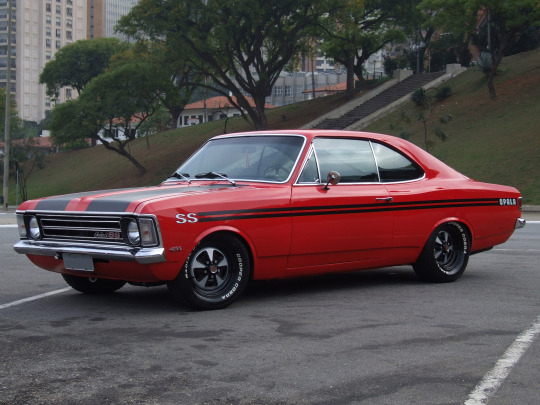

You know, the Chevelle SS. A car of the same vintage, whose sales were just as confined to a single American country I have never even seen, that looked like that for about one year. Which I absolutely knew of.
And that made me think about why that is for a bit - and about how stark of a difference that reason makes (because I could not confidently tell you a dozen Brazil-only cars, but could confidently list a hundred reserved to US and Canada).
Look at Italian music.
No, really - back in the days many of the biggest hits were translated English songs, there were people that sang with fake English accents, hell, it was damn near custom to get a stage name made up of an English name and Italian surname (Fred Buscaglione, Jimmy Fontana, Bobby Solo, Patty Bravo, on for days). Who was out there brazilianifying their name?
Sure, Italy may have been an outlier, but trust me, the cultural foothold America has in much of the Earth is virtually unmatched. And with that cultural hegemony comes a rose-tinted spotlight shone to its history (especially the one we were there to learn about live), such that to the rest of the world even US-exclusive models like 60s muscle cars are not just known, but iconic - even simply through other things like movies, shows, or music.
On the other hand, Brazilian cars (how many again?) are at most a curiosity that is sometimes tangentially mentioned to fill space - mostly because that's our treatment of Brazilian culture.
Rather than an awkward attempt to detail the sociopoliticoeconomical reasons for that, though, what I want to end on is a more positive note: there's always outliers.
Whatever population you look at, whatever culture you're thinking of, there will always be someone obsessed with it. And that's one thing I love about cars - each model, somewhere, somehow, has someone loving it. Each topic is a topic of interest to someone. And you can always be that outlier if you want - being interested in one thing never excludes being interested in another.
And in fact, in amongst all those fake-English stage names, an Italian duo chose a brazilianified last name - Michael and Johnson 'Righeira', seen here proving that 21st century "80s style" stuff can never be more exaggerated a caricature than some of the real thing.
youtube
Yes, that's Spanish. Don't worry about it.
Links in blue are posts of mine explaining the words in question - if you liked this post, you might like those!
#they also had hits in italian#and wrote songs in german and english too#and boy if you like potently 80s stuff this duo is the gift that keeps on giving#i would love to share more of their songs but THIS IS A CAR BLOG DAMMIT#chevrolet opala#chevrolet chevelle#regional differences
15 notes
·
View notes
Text
They need to take the hint. No one wants an EV. Not until they make them self driving and make it so you don't have break the bank to get a home charger or need a specific plug or station or lose charge while driving…
Nothing matters to consumers more than disadvantages. If it's not giving us the best bang for the dollar, it's junk. It's been that way really since the 80s. Cool concepts fail because cool doesn't translate into sales or long-term anything; we see it in all markets. Games, books, movies, toys, etc.…and it's very accurate in cars.
Big three are dumb as shit on this when they are making business decisions to satisfy woke assholes and bureaucrats instead of their customers. It's being out of touch and out of focus.
8 notes
·
View notes
Text
The Chevrolet Malibu, the last sedan still sold by General Motors’ biggest selling brand, will end production this year, the company announced.
Malibu production will end in November as the factory that builds it, the Fairfax Assembly Plant in Kansas City, Kansas, is reconfigured to build a new generation of the Chevrolet Bolt EV.
With the Malibu’s demise, General Motors’ mainstream Chevrolet brand will sell only trucks, SUVs, and the Corvette, a two-seat sports car, in the United States.
Chevy’s close competitor, Ford, made a similar move years ago when it stopped selling the Taurus and Fusion sedans, leaving the two-door Mustang as the only traditional car in its line-up. Chevrolet stopped making its Mustang competitor, the Camaro, last year.
Traditional cars – vehicles that are not SUVs, trucks or vans – make up less than 20% of US auto sales, according to Cox Automotive. The last generation of the Malibu was first introduced in 2016, making it much older than competitors such as the relatively popular Honda Accord and Toyota Camry. A new version of the Camry, now available only as a hybrid, just went into production. Still, GM sold more than 130,000 Malibus last year, a 13% increase from the year before.
5 notes
·
View notes
Text


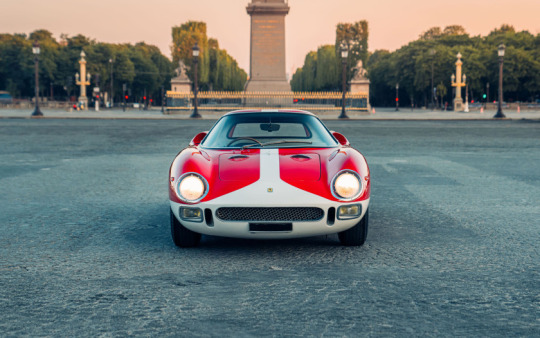
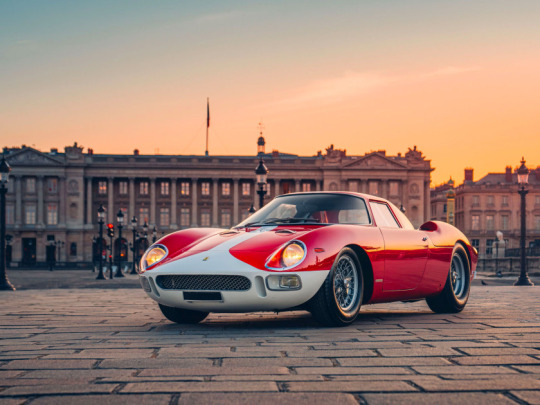
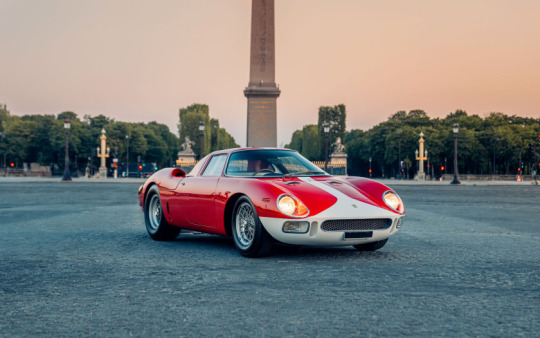
1964 Ferrari 250 LM Berlinetta by Pininfarina
Chassis No. 5901
Engine No. 5901
Internal number 138/LM
Gearbox No. 18
- 2023: 60th anniversary of the Ferrari 250 LM
- One of the absolute masterpieces in the history of the Automobile
- The 10th Ferrari 250 LM on only 32 copies built
- Rarer than a 250 GTO
- A real milestone in Ferrari history: the first car of the brand with a V12 engine in the rear center position, the last to win the 24 Hours of Le Mans before 2023!
- With Ferrari's victory at the hundredth edition of the 24 Hours of Le Mans 2023, the 250 LM is now part of a fantastic saga whose future remains to be written
- Matching numbers (chamber, engine, box, bodywork)
- History followed, restored in 1998/1999 by DK Engineering
- In a major French collection from 2002 to 2022
- Validated by the Ferrari Classiche committee, with a view to its certification
FERRARI 250 LM - MODEL PRESENTATION
Unveiled at the Paris Salon in October 1963, the 250 LM is a berlinette version of the 250 P which, presented in the previous March, can already boast of many successes in the race, before a victory at Le Mans in 1964. Designed under the authority of Chief Engineer Carlo Chiti, it is the first competition Ferrari with a V12 engine in a central position. The 246 SP inaugurated this new architecture in 1961, but with a V6 engine.
For the 250 LM, Scaglietti has signed a masterful shape, whose tapered front draws an amazing contrast with the long and muscular back that reveals the presence of powerful mechanics. The small central arch brings lightness to the pavilion, and one of the most spectacular elements is the vast hood that rises like a cathedral to reveal the bowels of this radical machine.
With the 250 LM, Enzo Ferrari wants to take over from the 250 GTO and have it homologated in GT. But if FIA officials have turned a blind eye to the Commendatore's tendentious arguments that allowed the homologation of the 250 GTO (which he had announced as a simple evolution of the 250 GT), this time they do not let themselves go and demand the production of the 100 copies required. However, Ferrari will only produce 32, so that the 250 LM will remain in the "Prototypes" category and will have to compete against more powerful cars, the most emblematic of which will be the Ford GT40 mentioned above. Glorious protagonist of the Ford-Ferrari duel, the 250 LM beautifully defended the colors of the Italian manufacturer by compensating for its power deficit with qualities of handling and maneuverability that were lacking in other more powerful cars. Carlo Chiti had seen it right by managing to convince Enzo Ferrari to switch to the rear engine, when he was reluctant.
Moreover, the 250 LM should have been called 275 LM (according to the Ferrari nomenclature using the unit displacement) because after the copy of the Paris Motor Show, the following ones received a 3.3 Liter engine; hoping to deceive the vigilance of the FIA for the reasons mentioned above, Enzo Ferrari wanted to keep the name 250.
Given its design, the 250 LM was intended for the track much more than for the road, and most of the copies produced have experienced the throes of competition and its hazards. However, this is not the case with the car we present, whose career took place in the hands of individuals and collectors who have never engaged it in the race. It was certainly present in 1966 at the 24 Hours of Daytona, but as a simple reserve car. This is why it is now beautifully preserved of origin, as we will see later.
THE FERRARI 250 LM OF THE SALE, #5901
The complete history of this work of art is established and documented by brand specialist Marcel Massini. According to the manufacturing sheet of this 250 LM, its tubular chassis was supplied to the Scaglietti bodywork in Modena on June 24, 1964. On September 18, the assembly of the engine, carried out by mechanic Baschieri, was completed under the control of foreman Amos Franchini. It was the same Amos Franchini who supervised the assembly of the gearbox, completed on September 23 by Ivo Giusti. The official order of Luigi Chinetti, boss of the N.A.R.T. (North American Racing Team) and importer of the brand based in New York, dated the following November 6, followed on the 14th by the manufacturer's invoice. On November 20, the car was transported to the port of Livorno and embarked on board the cargo ship Maria Costa, which then left for New York. After his arrival, the car was sold by Chinetti to its first owner, Raymond John Augusterfer, residing in Philadelphia.
On February 5 and 6, 1966, this Ferrari 250 LM was used as a reserve car for the 24 Hours of Daytona by the N.A.R.T., but no damage having stopped the engaged cars, it will not take part in the race and will remain in the paddock. The following year, Luigi Chinetti took over the car and sold it in 1968 to George Arents, from Warren, then in 1969 to Walter and Irene Young, from Wilton. After a visit to Kirk F. White Motorcars (Philadelphia), the car was bought on June 29, 1970 by William B. Rearden (Villanova, Pennsylvania), for the sum of $16,500 with, in soulte, his Ferrari 330 P Spider. Rearden kept her for eight years, while she appeared in issue 37 of Prancing Horse, the Ferrari Club of America bulletin, next to the 330 LMB and the Dino 246 GTS in her collection. Its owner also had the opportunity to use it on June 1, 1974 at the Ferrari club's annual meeting on the Lime Rock circuit, then at the Ferrari Parade organized as the opening of the Watkins Glen F1 race on October 5, 1975.
Artcurial
#ferrari#250LM#prancing horse#le mans#24 hours of Daytona#pinafarina#italian#Artcurial#sixteen million dollars
8 notes
·
View notes
Text
BY PENELOPE GREEN NEW YORK TIMES
In the winter of 2003, Norah Vincent, a 35-year-old journalist, began to practice passing as a man.
With the help of a makeup artist, she learned to simulate stubble by snipping bits of wool and painting them on her chin. She wore her hair, already short, cut in a flattop and bought rectangular framed glasses, to accentuate the angles of her face. She weight-trained to build up the muscles in her chest and back, bound her breasts with a too-small sports bra and wore a jock strap stuffed with a soft prosthetic penis.
She trained for months at the Julliard School in New York with a vocal coach, who taught her to deepen her voice and slow it down, to lean back as she spoke rather than leaning in, and to use her breath more efficiently. Then she ventured out to live as a man for 18 months, calling herself Ned, and to chronicle the experience.
She did so in "Self-Made Man," and when the book came out in 2006, it was a nearly instant bestseller. It made Vincent a media darling; she appeared on "20/20" and on "The Colbert Report," where she and Stephen Colbert teased each other about football and penis size.
But the book was no joke. It was a nuanced and thoughtful work. It drew comparisons to "Black Like Me," white journalist John Howard Griffin's 1961 book about his experiences passing as a Black man in the segregated Deep South. David Kamp, writing in The New York Times Book Review, called Vincent's book "rich and audacious."
Vincent died July 6 at a clinic in Switzerland. She was 53. Her death, which was not reported at the time, was confirmed Thursday by Justine Hardy, a friend. The death, she said, was medically assisted, or what is known as a voluntary assisted death.
Vincent was a lesbian. She was not transgender or gender-fluid. She was, however, interested in gender and identity. As a freelance contributor to The Los Angeles Times, The Village Voice and The Advocate, she had written essays on those topics that inflamed some readers.
In her year and a half living as Ned, Vincent put him in a number of stereotypical, hypermasculine situations. He joined a blue-collar bowling league, although he was a terrible bowler. (His teammates were kind and cheered him on; they thought he was gay, Vincent learned later, because they thought he bowled like a girl.)
He spent weeks in a monastery with cloistered monks. He went to strip clubs and dated women, although he was rebuffed more often than not in singles bars. He worked in sales, hustling coupon books and other low-margin products door-todoor with fellow salesmen who, with their cartoon bravado, seemed drawn from the 1983 David Mamet play "Glengarry Glen Ross."
Finally, at an Iron John retreat, a therapeutic masculinity workshop – think drum circles and hero archetypes – modeled on the work of men's movement author Robert Bly, Ned began to lose it. Being Ned had worn Vincent down; she felt alienated and dissociated, and after the retreat she checked herself into a hospital for depression.
She was suffering, she wrote, for the same reason that many of the men she met were suffering: Their assigned gender roles, she found, were suffocating them and alienating them from themselves.
Norah Mary Vincent was born Sept. 20, 1968, in Detroit. Her mother, Juliet (Randall) Ford, was an actor; her father, Robert Vincent, was a lawyer for the Ford Motor Co. The youngest of three, Vincent grew up in Detroit and London, where her father was posted for a while.
She studied philosophy at Williams College in Massachusetts, where at 21 she realized she was a lesbian, she told the Times in 2001, when her contrarian freelance columns began drawing fire. She spent 11 years as a graduate student in philosophy at Boston College and worked as an assistant editor at the Free Press, a publishing house that before it folded in 2012 put out books on religion and social science and had, in the 1980s, a neoconservative bent. Vincent's first work of fiction was "Thy Neighbor" (2012), a dark, comic thriller about an unemployed alcoholic writer who begins spying on his neighbors while trying to solve the mystery of his parents' murder-suicide: voyeurism as a means to self-knowledge.
Vincent is survived by her mother and her brothers, Alex and Edward. From 2000 to 2008, her domestic partner was Lisa McNulty, a theater producer and artistic director. A brief marriage to Kristen Erickson ended in divorce.
43 notes
·
View notes
Text
Gengras Motor Cars
Customers go from all across the United States to do business with Gengras Motor Cars. It takes strength, not weakness, to admit wrongdoing and ask for forgiveness. We're relieved to hear that you enjoyed your time with us. Tell us how we can be of service. Hondas, BMWs, Subarus, Fords, Volkswagens, Volvos, Chevrolets, Dodges, Chryslers, and Jeeps, to name a few, are just some of the many makes and models represented at the nearby dealership car dealership near me Find a dealership that carries a wide variety of automobile models. The names Honda, BMW, Subaru, Ford, Volkswagen, Volvo, Chevrolet, etc. are surely familiar to you. To save you time, we researched numerous automakers online. You can save a lot of money by purchasing a used Honda, BMW, Subaru, Ford, Volkswagen, or Chevrolet. We can assist you in your search for a new or used vehicle. Contacting local establishments is one way to learn which models are supported in your area. We scoured the country for the lowest prices on new and used cars. If you're in the market for a new car, we can connect you with a dealer in your area who stocks your preferred make and model. If you're interested, just let us know, and we'll put you in touch with a used vehicle dealership in your area. If you're looking for a new Chevrolet Equinox or any other Chevrolet vehicle in the greater Connecticut area, Gengras Chevrolet is your best bet. If you want to buy a new Chevrolet in the United States, the best location to do it is at the Gengras dealership. Every new Chevrolet model, as well as every new Chrysler, Dodge, Jeep, and Ram, can be found at Gengras car dealerships in Massachusetts and Connecticut. Connecticut and Massachusetts now have Gengras service centers, which is great news for New England Chrysler drivers.

Gengras' Connecticut car lots stock Volvos such the XC40, XC60, and S60. The following establishments are cash-only. People from many walks of life and all parts of the world make their home in Gengras. There is a Volvo dealership in East Hartford, CT, and a Volvo service center in North Haven, CT. This could never take place in a country where there is not a robust constitutional democracy. Volvo dealerships can be found in both of these very identical Connecticut towns. Hold on a second! BMW of West Springfield offers a wide variety of new BMW models, including the 330 xDrive, X3, and 5 Series. We can assist you in locating a trustworthy vehicle lot in New Haven, New Hampshire, or Vermont.
At GENGRAS MOTOR CARS, we place a premium on 100% satisfied clients.
Customers travel from all across the Northeast to do business with Gengras Auto Sales, not just New Hampshire and Vermont. We promise that you will be pleased with any vehicle you choose from our extensive inventory. This is due to the fact that we carry products from a wide variety of suppliers used car dealerships near me The Chevrolet Equinox is only one of many crossover SUVs available from Gengras Chevrolet. We are committed to regaining your confidence. We have the largest selection of Chevrolets in the region. We guarantee that you will not find a better selection or lower prices anywhere else. Chrysler Visit Gengras Dodge Jeep Ram if you wish to acquire an authentic Jeep Grand Cherokee. If financial gain is your primary motivation, something is wrong with you. We're the one and only dealership in Rhode Island, Massachusetts, and Connecticut you'll ever need. Invest in a brand-new vehicle. We are offering this discount on any vehicle we currently have available. Any Google search for "car dealer near me" will include a Gengras business. A Gengras dealership will be one of the first search results when you type "car dealer near me" into Google. When people in East Hartford and North Haven type "car dealer near me" into a search engine, the Gengras company comes up. Hartford International Airport is the only one of Connecticut's four main airports regularly served by the major international carriers. Volvo's XC40, XC90, and XC60 all come in a wide variety of configurations and levels of trim for 2018. To ignore this evidence would be reckless. Customers of all income levels frequently give our Connecticut firm five stars. Customers who would rather not draw attention to themselves are always welcome at high-end stores. BMW's decision to locate an assembly plant in West Springfield is great news for the area. Make certain changes to the regulations. Honda has relocated its headquarters from New Hampshire to White River Junction, Vermont. For a long time, New Hampshire was home to Honda's North American headquarters. Torrington, Wyoming area residents looking for a new Subaru or Subaru SUV should visit Gengras Subaru. You can get to Gengras Subaru in no time. Gengras Subaru is your one-stop shop for all things Subaru. No changes are required at this time. Everything from little city cars to large off-road SUVs can be manufactured.
Gengras can help you rent a car in Massachusetts if you call +18602893461. These products are manufactured by an abundance of businesses. If you're having trouble finding the right car in Massachusetts, don't be shy about getting in touch with us. If you're looking to buy a car in Connecticut or Vermont, Gengras is your best bet. When it comes to autos, residents in Vermont are spoiled for choice. Our current strategy is obviously not working, so let's try something different.
4 notes
·
View notes
Text
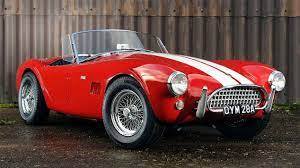
1963 AC SHELBY COBRA
1963 AC SHELBY COBRA 4.7-LITRE MARK II ROADSTER
REGISTRATION NO. OYM 28A
CHASSIS NO. CSK2116
ENGINE NO. CSX2116
Footnotes
Rightly regarded as one of the all-time great classic sports cars, the muscular, fire-breathing Cobra succeeded in capturing the hearts of enthusiasts like few of its contemporaries. Only 1,000-or-so Cobras of all types were built between 1962 and 1967, but such was the model's enduring popularity that production was resumed in 1982 under the auspices of Brooklands-based Autokraft.
Convinced that a market existed for an inexpensive sports car combining European chassis engineering and American V8 power, Le Mans-winning Texan racing driver Carroll Shelby concocted an unlikely alliance between AC Cars and the Ford Motor Company. The former's Ace provided the simple twin-tube chassis frame - designed by John Tojeiro - into which was persuaded one of Ford's lightweight, small-block V8s. It was discovered that the latter was lighter than the six-cylinder Ford Zephyr unit that AC was using, yet with vastly greater potential. To cope with the projected power increase, the Ace chassis was strengthened with heavier gauge tubing and supplied fitted with four-wheel disc brakes. Weighing a mere 1.5cwt more than a Bristol-engined Ace yet endowed with double the power and torque, the Cobra turned in a breathtaking performance, racing to 60mph in 4.4 seconds and reaching the 'ton' in under 12, exceptional figures by early 1960s standards and none too shabby even today.
The 260ci (4.2-litre) prototype first ran in January 1962, with production commencing later that year. Exclusively for the USA initially, Cobras - minus engines - were sent from England to be finished off by Shelby in California, and it was not until late in 1963 that AC Cars in Thames Ditton got around to building the first fully finished cars to European specification.
After 75 Cobras had been built with the 260ci engine, the more powerful 289ci (4.7-litre) unit was standardised in 1963. Rack-and-pinion steering was the major MkII up-date; then in 1965 a new, stronger, coil-suspended MkIII chassis was introduced to accommodate Ford's 427ci (7.0-litre) V8, an engine that in race trim was capable of producing well in excess of 400bhp. Wider bodywork, extended wheelarch flares and a bigger radiator intake combined to create the definitive - and much copied - Cobra MkIII look. Keeping ahead of the competition on the racetrack had been the spur behind Shelby's adoption of the 427 engine, but some MkIIIs to 'street' specification came with Ford's less powerful 428ci hydraulic-lifter V8.
But for Brian Angliss, the Cobra story would have ended in 1967. The Autokraft boss had built up a business restoring Cobras and supplying parts, and in the early 1980s acquired the rights to the AC name plus a quantity of jigs and tooling from the old Thames Ditton factory. Keeping the overall style of the MkIII, Autokraft produced the MkIV, which was appropriately updated to meet current legislation and powered by a 'Federalised' Ford 5.0-litre V8 engine. Around 480 were built.
Chassis number 'CSX2116' was invoiced to Shelby American on 16th April 1963 and shipped to Los Angeles three days later aboard the 'SS Loch Gowan'. Invoiced on 18th June 1963 to Burton Motors of Sacramento, California, the Cobra was sold new to a local doctor who used it for a few years before giving it to his daughter. She used the car as daily transport for several years before the clutch failed, at which time it was sold to Steve Dangremond of Santa Rosa, California. The Cobra was advertised for sale by Mr Dangremond in late 1977 and bought by Dr Grant Hill of Chotoka, Alberta. Dr Hill fitted Weber carburettors and raced 'CSX2116', eventually trading it to Fred Yule in Portland, Oregon. At that time, the car was still finished in its original colour scheme of dark blue and retained its original black leather interior.
'CSX2116' returned to the UK in the late 1980s and was advertised through Hampson's Ltd, by which time it had been refinished in red and fitted with a full-width roll bar. Subsequent owners in England were Dr Carlos Barbot, Trojan boss Peter Agg and Formula 1 racing driver Rupert Keegan. 'CSX2116' was last restored in 1988, records on file indicating that an extensive mechanical restoration was undertaken at this time. The car still retains its original black leather interior though the Weber carburettors have gone, replaced by an easier to maintain four-barrel Holley. There is considerable additional accompanying documentation including correspondence between previous owners, a copy of the original bill of sale, Shelby American Automobile Club letter of authentication, FIA papers and Swansea V5 registration document. The car has belonged to the current owner since 2006.
Early Cobras are offered for sale only rarely and this example represents a wonderful opportunity to acquire a fine example of this classic of Anglo-American sports car design.
90 notes
·
View notes
Text
The New Ford Ranger’s Ranking In SA’s Bakkie Market
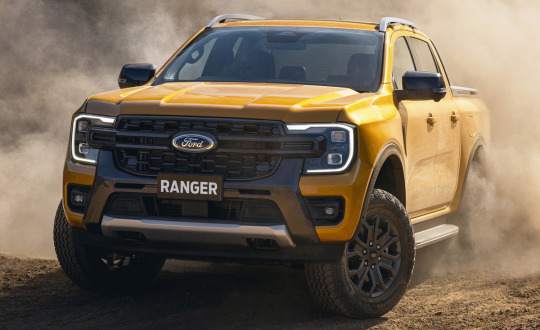
The new Ford Ranger is now in South African showrooms, with prices starting at R486,000 for the entry-level trim whereas the top-end model comes in at R953,500.
The Ford Ranger for sale is one of the most popular options for local bakkie buyers and is the manufacturer’s best-selling vehicle in this market.
Initially only available in double cab, TopAuto compared four specifications of the fresh-faced Ford to their biggest competitors at various price ranges to find out how the new generation stacks up against its old rivals.
Ranger specifications
The new Ford Ranger is offered in Base, XL, XLT, and Wildtrak trim levels in the domestic market, with three engines between these models.
The Base and XL are driven exclusively by a 2.0-litre, single-turbo diesel motor paired with a six-speed manual or automatic shifter.
The pricier XLT, on the other hand, is only offered in automatic and can be had with the same single-turbo plant paired with a six-speed gearbox, or a 2.0-litre bi-turbo option with a 10-speed box.
Similarly, the range-topping Wildtrak is also available with two power units comprising either the aforementioned bi-turbo or a new 3.0-litre, V6, both connected to a 10-speed auto transmission.
Each of these drivetrains is available in rear-wheel or all-wheel drive, with the 4×4 models being equipped with one of two systems – a part-time “shift-on-the-fly” or advanced “permanent” configuration.
While the 2.0-litre motors were available in the previous generation, the new ones have been given a bump in power. Alongside this, the bakkie gained a brutish V6 engine for the flagship Wildtrak to replace the bi-turbo unit of old.
As before, however, the Ranger still supports a maximum payload in excess of one tonne and a braked towing capacity of 3,500kg – but it now also boasts a wider footprint and far more aggressive approach and departure angles thanks to shorter body overhangs.
Looking for a quality used Ranger for sale instead? See what’s available…
.
.
.
.
Article shared from https://topauto.co.za/
3 notes
·
View notes
Text
2021 Ford Ranger Comprehensive Review

Ford is well aware that its flagship Ranger offerings are priced out of the reach of many bakkie fans. The XL Sport version was built to offer most of the workhorse- and lifestyle bakkie experience, but at a more affordable price. We examine "how much bakkie" you get for your money if you go the close-to-bottom-spec route.
Engine: 2.2-litre turbodiesel 4-cylinder
Power/Torque: 118 kW/385 Nm
Transmission: 6-speed automatic
Fuel consumption: 8.2 L/100 km (claimed)
While many bakkie enthusiasts dream of owning a Ranger Wildtrak or -Raptor, the reality is that the asking prices of those flagship bakkies have reached astronomical heights. This is not a purely Ford problem as top-spec offerings from Volkswagen and Toyota have both skyrocketed, with the former being oh-so-close to the R1-million mark. Double-cab bakkies aren't only luxurious indulgences for South African consumers, however. Granted there's been a shift towards lifestyle use, but the core roles of business and utility remain. The price band for the Ford Ranger for sale is enormous, so the lower end of the scale is dominated by industrial-spec workhorses, but what if we told you that mixing business with pleasure was not just a cliche?
Ford recently introduced a Sport pack for its XL-grade Ranger derivative. This is not a vehicle we'd usually get for testing as it is primarily a workhorse, but the addition of the Sport pack brings a lifestyle edge that notably broadens the bakkie's appeal. The XL Sport treatment incorporates a gloss-black grille, with a matching sports bar, rear bumper and 17-inch alloy wheels, plus the test unit was fitted with the excellent Ford SYNC3 infotainment system with Apple CarPlay/Android Auto connectivity. This modern unit replaces the rather basic system that comes out of the factory.
The package is a proper back-to-basics offering, but it doesn't feel bareboned. There's no modern Ford biturbo 2.0-litre diesel engine here, with the Blue Oval sticking with the tried-and-tested older-gen 2.2-litre 4-pot turbodiesel unit. Is this mutton dressed as lamb, or has Ford managed to make a compelling value-for-money product? Let's take a look.
Performance and ride/handling
Ford's new-generation powertrains are fantastic; the 2.0-litre engines offer a great blend of power and economy, and the 10-speed transmission intuitively selects the appropriate ratios at the right time. The Ranger XL Sport is different – it uses an older-spec motor and a 6-speed automatic 'box. The 2.2-litre 4-cylinder diesel offers up to 118 kW and 385 Nm, which are sufficient outputs for day-to-day use. It's not the most eager of powertrains when you need maximum acceleration, but you never feel there's a shortage of grunts when overtaking on a national highway. The transmission may not be the fastest-shifting 'box in the business, but you have to remind yourself this is a blue-collared working-class hero. A manual gearbox is also available, but most of our readers are unlikely to go the 3-pedal route.
When it came to fuel economy, we were hoping to see returns of under 10 L/100 km, but excessive inner-city urban driving with traffic saw the consumption figure climb up. By the time the vehicle went back to Ford, the trip computer read 10.8 L/100 km, which was not ideal, but not unexpected. Add a few open-road trips into the mix and we reckon the Ranger XL Sport would dip under 10 L/100 km.
Despite its dapper cosmetic accoutrements, is the Ranger still a capable off-roader? We put this to the test on the vehicle's launch (late in 2020) when the Ford traversed with the kind of obstacles most Ranger owners are unlikely to encounter. The bakkie performed admirably; we even waded through a river to test out the claimed 800-mm water clearance. The 4×4 operation is simple: you toggle between 2 High, 4 High and 4 Low with a rotary dial (4L, of course, still requires you to come to a complete stop and engage neutral. The tyres (265/65 R17 Goodyear Wranglers) helped extensively on the launch, but interestingly, our test unit came with 17-inch alloys wrapped in chunky 265/65 Continental Cross Contact off-road rubber. While we didn't test those, they certainly looked the part.
With such extensive off-road experience under our belt, we conducted more of a "real-world test" of the Ranger in and around Cape Town. Usually, specialised off-road tyres produce unpleasant levels of road noise on asphalt surfaces, but we're happy to report the Ford Ranger XL Sport didn't seem to generate any more tyre rumble than a double-cab bakkie shod with standard tyres. On longer trips, when travelling at higher-than-average speeds, the rubber did make its presence known, but the hum was drowned out by some of our favourite road-trip tunes played through Spotify and Android Auto.
As far as ride quality is concerned, the Ranger is a body-on-frame double-cab bakkie, remember, so when unladen, the rear end can jiggle about, but that's to be expected. In case you don't know, when there's no weight on their leaf-sprung rear axles, bakkies can bounce, jiggle and shimmy at higher speeds. While it'd be impossible to eliminate this characteristic entirely, the latest Rangers in XLT and Wildtrak guise have received some tweaks to the suspension to dial this out with mixed success. The Ranger XL Sport has none of this and it feels old-school, but at this price point, we can't complain.
Exterior and Design
The Ranger XL is, arguably, as basic as it gets when it comes to exterior execution, but the Sport pack adds some notable visual updates that ramp up Ford's road presence/kerb appeal. We've already mentioned the off-road-specific tyres, which are really great from a visual point of view, but their chunky sidewalls are also likely to withstand some serious pothole impacts.
The 17-inch Panther black alloy rims also give the vehicle a lifestyle edge compared with the standard bakkie's stock wheels. There's a big black gloss grille too and we'll bet that'd be an imposing sight in other motorists' rear-view mirrors! A black rear bumper has been fitted, as well as a tubular sports bar. Customers can also opt for black side steps for R5 000. There's a nice sport badge on the rear too.
Interior and features
Given its workhorse origins, it would be rather unfair to expect the XL Sport to have a luxury level of interior spec, but just about everything you'd need in terms of mod cons is present and correct. There is a simple unfussiness to the cabin layout, but some may be put off by the extensive use of cheap-looking and cheap-feeling plastics. This is the bottom-spec Ranger, however, so you can't be too demanding.
We understand this is a basic offering, but the lack of rear parking sensors in something as large as a double-cab bakkie may cause many stressful parking situations. Thankfully, this is available as an extra-cost option. In terms of the requisite features, there's air conditioning, fabric seats, front/rear electric windows, remote central locking, aux/USB connectivity, as well as daytime running lights. The arguably class-leading 8-inch infotainment system was fitted to this vehicle and for R6k, we'd heartily recommend going this route as it adds hands-free telephony, music streaming and navigation into the mix.
You cannot even begin to compare the standard infotainment unit to the SYNC3-equipped system, they're light-years apart. Given its hands-free operation, which is safer to operate, we're in full support of it. Voice command is supported and works well. Saying, 'Hey Google, navigate home' will activate Google Maps and navigation. Other instructions, like asking for music from your favourite band on streaming services, work well and the system will even read out WhatsApp messages and allow you to reply, all without your hands leaving the 'wheel.
Service and Warranty
The Ford Ranger is sold with a 4-year/120 000 km warranty, 6-year/90 000 km service plan, 5-year/unlimited km corrosion warranty, and 3-year/unlimited km roadside assistance.
Verdict
Given the difficult financial climate, we applaud Ford for offering prospective buyers a cost-effective way to upgrade the versatile Ranger XL. Despite its basic underpinnings, there's something refreshing about an honest and uncomplicated vehicle that is fit for purpose. The Sport pack gives the bakkie a welcome image boost, but our favourite part of this kit has to be the wheels. Not only do they look the part, but those thick-walled off-road tyres should soak up the horrendous swathe of potholes littered on our roads. Price-wise, the XL Sport significantly undercuts its flashier XLT and Wildtrak siblings and while more expensive Rangers offer newer powertrains, more refinement and extra creature comforts, the XL Sport offers 75% of that experience at a pocket-friendlier price. That's a win in our books.
You could always look to the demo and pre-owned market too, where significant savings are to be had. The recently revised Toyota Hilux Raider and all-new GWM P-Series are the Ranger XL Sport's key rivals. The former offers legendary reliability and the after-sales backing of a 3-time #CarsAwards Brand of the Year winner, while the GWM is keenly priced and well specified, but still an unknown quantity on the local market. Suffice it to say, it's a huge credit to the Blue Oval that the Ranger remains a frontrunner given that the current generation of the bakkie has been on our market for almost a decade.
.
.
.
.
Review compiled by https://www.cars.co.za/
2 notes
·
View notes
Link
However, the growth was not enough to fend off GMs surging EV sales this year. GM said on Monday it had sold over 20,000 EVs for the first time in a quarter, nearly double that of Ford’s in the first three months of 2023. The upsurge in EV sales was fueled by Chevy Bolt EV and EUV sales, selling 19,700 alone after overcoming a recall in early 2022 for its third consecutive record quarter(..)
P.S. EVs made by Ford are very expensive...and the process of buying them is way too complicated and slow...
#car market#USA#affordable ev#GM#Chevrolet Bolt#Chevrolet Bolt EUV#semi-affordable ev#made in america#ev sales#electric vehicle#electric car#competition#fossil fuel phase-out#ev adoption#Ford
2 notes
·
View notes
Text
Golf mk4

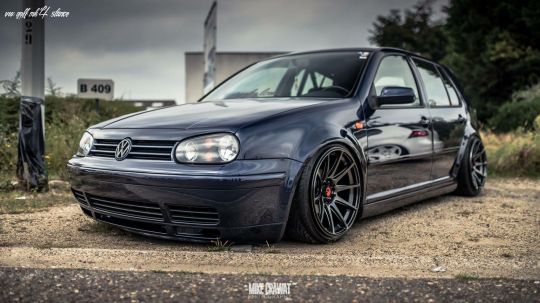
Cars that didn't cut the mustard: The modern-era motors on sale in the UK for the shortest time before being culled from showrooms.
Mecca Bingo owner Rank to get tax rebate of over £80m from HMRC in slot machine VAT refund saga.
New York-based private equity giant Apollo Global Management is mulling a buyout of Marks & Spencer.
Raising airport charges would force us to reconsider our presence at Heathrow, warns IAG boss.
MPs believe sale of Arm to Nvidia is unlikely to go through and would welcome its return to the stock market.
Bank of England Governor Andrew Bailey hits back at claims of being an 'unreliable boyfriend'.
BHP forges deal to sell its oil and gas to Woodside to create one of the world's largest independent energy producers.
Competition watchdog puts brakes on British Airways' owner's £450m acquisition of Spanish budget carrier Air Europa.
Company that uses data to monitor physical activity and encourage people to play more sport plans to list on the London market early next month.
BUSINESS CLOSE: Bulb Energy faces collapse Powell nominated for second term at Fed LV board defends Bain deal.
Interactive Investor launches friends and family plan: Existing customers pay extra £5 a month to gift free membership to up to five people.
Probe reveals new hybrid cars with higher levels of harmful emissions than diesels, as Dispatches discovers some public chargers out of service for years.
Can it pay to be a serial bank switcher? Here are five current accounts with the juiciest sign-up bonuses and how to take advantage of them all.
Bulb Energy with 1.7m customers becomes biggest gas and electricity firm yet to go into administration as Government agrees to prop it up.


Ferrari unveils stunning new Daytona SP3 supercar that's a £1.7million tribute to its racers that took revenge against Ford in 1967 - and all 599 are sold.
Cynergy Bank launches new best buy easy-access savings deal offering the highest rate for more than a year.
Bank network shrinks by 267 branches in three months: Could your local branch be next on the chopping block?.
Can I take 25% tax free cash from my £1m retirement savings, without touching my final salary pension? Steve Webb replies.
By the time production on the Mk4 ceased, Volkswagen had put 4.99 million units on the road.ġ997 Extremely high body quality levels, achieved by elements including laser weldingġ997 Navigation system with large color screen for the very first timeġ998 Introduction of the optionally available Electronic Stability ControlĢ002 First Golf with direct petrol injection engine (FSI)Ģ002 Debut of the Golf R32 as sporty, top-of-the-range modelĢ003 First dual clutch gearbox (DSG) in Golf R32Ģ003 Phase-out of the fourth generation after 4. It was the first Golf to face serious competition in the C-segment thanks to Ford and Opel launching the 1st-gen Focus and 2nd-gen Astra, respectively, in 1998. In the end, the Mk4 will go down as one of the most important generations ever. It preceded the Golf R32, which arrived the following year with a new VR6 engine, a top speed of 155 mph (250 km/h) and, for the first time in a Golf, a dual clutch DSG gearbox. In 2001, the 180 PS Edition 25 was launched to mark the GTI’s 25th anniversary. The GTI switched to a turbocharged 1.8-liter with 150 PS. While the German automaker didn’t build an actual Cabriolet version of the Mk4, carrying over the third-gen with a fourth-gen-like front end instead, the compact hatchback was available as a three-door, five-door and estate. Its platform was also used for the first-generation Seat Leon and Skoda Octavia, two models that allowed V-Dub to market the Golf Mk4 as a more upscale product, which was by no means a stretch since interior quality was on par with that of the Mk1 Audi A3. Like with its predecessors, there were multiple body styles to choose from, as well as derivatives such as the fourth-gen VW Jetta (Bora). In time, ESC became standard and direct injection gasoline engines (FSI) were made available.Īlso Read: VW Golf Countdown: 1991-1996 Mk3 Was Full Of Safety First But Not The Most Memorable Drive In 1999, it gained a 6-speed gearbox for the first time, but not before receiving a sat-nav system with a large color screen. It had features such as Electronic Stability Control (ESC) and brake assist and became the first Golf to utilize VW’s new 4MOTION all-wheel drive system. In fact, three years after its launch, it became Europe’s best selling car thanks to its high-quality interior and strong equipment levels. As we continue to count down to the launch of the new Golf Mk8, we arrive at the fourth-generation model, a car that signified Volkswagen trying to take the nameplate to a whole different level in terms of quality.ĭeveloped in the mid 1990s, the Golf Mk4 made its debut in 1997 and became an instant hit.

3 notes
·
View notes
Text
Automotive Voice Recognition System Market Forecast 2024-2033
Overview and Scope
An automotive voice recognition system, or voice-activated system, refers to a technology that can decode human speech and allows the driver to speak commands. It is used to prevent distractions from operating the infotainment system while driving.
Sizing and Forecast
The automotive voice recognition system market size has grown rapidly in recent years. It will grow from $2.51 billion in 2023 to $2.88 billion in 2024 at a compound annual growth rate (CAGR) of 14.6%. The growth in the historic period can be attributed to growing focus on driver safety, integration with smart devices, voice commerce integration, rising adoption of autonomous driving, growing popularity of luxury vehicles.

The automotive voice recognition system market size is expected to see rapid growth in the next few years. It will grow to $4.8 billion in 2028 at a compound annual growth rate (CAGR) of 13.7%. The growth in the forecast period can be attributed to advancements in natural language processing (nlp), rapid growth in connected vehicles, personalization and customization, multimodal interaction, biometric authentication, cloud-based services and connectivity, increasing demand for multilingual support. Major trends in the forecast period include integration of artificial intelligence (ai), integration with augmented reality (ar), integration with advanced technologies, integration with machine learning.
Segmentation & Regional Insights
The automotive voice recognition system market covered in this report is segmented -
1) By Level Of Autonomous: Autonomous, Conventional, Semi-Autonomous
2) By Technology: Embedded, Cloud-Based, Hybrid
3) By Fuel Type: Internal Combustion Engine (ICE), Battery Electric Vehicles (BEV), Hybrid Electric Vehicles (HEV), Plug-In Electric Vehicles (PEV)
4) By Application: Artificial Intelligence, Non-Artificial Intelligence
5) By End User: Economy Vehicles, Mid-Priced Vehicles, Luxury Vehicles
North America was the largest region in the automotive voice recognition system market in 2023. Asia-Pacific is expected to be the fastest-growing region in the forecast period. The regions covered in the automotive voice recognition system market report are Asia-Pacific, Western Europe, Eastern Europe, North America, South America, Middle East, Africa.
Major Driver Impacting Market Growth
The increasing adoption of vehicles is expected to boost the growth of the automotive voice recognition system market going forward. A vehicle is a machine with an engine that transports people or stuff from one location to another. Car owners use automotive voice recognition systems for hands-free comfort, safety, and around-the-clock connectivity. For instance, in March 2022, according to a report published by the European Automobile Manufacturers’ Association (ACEA), the leading lobbying and standards group for the automobile industry in the European Union, sales of passenger cars in the US increased to 11.9 million units in 2021. Over 6.3 million passenger cars were produced in US auto facilities in 2021. Further, Chinese automakers had 20.7 million vehicles in 2021, an increase of 7.1%. In 2021, the total number of cars produced worldwide climbed by 2.7% to 63.2 million. Therefore, the increasing adoption of vehicles is driving the growth of the automotive voice recognition system market.
Key Industry Players
Major companies operating in the automotive voice recognition system market report are Volkswagen AG, Toyota Motor Corporation, Bayerische Motoren Werke AG, Honda Motor Co. Ltd., Ford Motor Company, Hyundai Motor Company, Robert Bosch GmbH, Nissan Motor Co. Ltd., LG Electronics, Panasonic Corporation, International Business Machines Corporation, Kia Motors Corporation, Mitsubishi Electric Corporation, AISIN SEIKI Co. Ltd., Valeo SA, NXP Semiconductors N.V., Harman International, Visteon Corporation, Cadence Design Systems Inc., iFLYTEK Corporation, Nuance Communications Inc., Knowles Corporation, Cerence Inc., Continental AG, Sensory Inc., SoundHound AI Inc., Kardome Technologies Ltd., Lumenvox
The automotive voice recognition system market report table of contents includes:
1. Executive Summary
2. Automotive Voice Recognition System Market Characteristics
3. Automotive Voice Recognition System Market Trends And Strategies
4. Automotive Voice Recognition System Market — Macro Economic Scenario
5. Global Automotive Voice Recognition System Market Size and Growth
.
.
.
31. Automotive Voice Recognition System Market Other Major And Innovative Companies
32. Global Automotive Voice Recognition System Market Competitive Benchmarking
33. Global Automotive Voice Recognition System Market Competitive Dashboard
34. Key Mergers And Acquisitions In The Automotive Voice Recognition System Market
35. Automotive Voice Recognition System Market Future Outlook and Potential Analysis
Explore the trending research reports from TBRC:
Contact Us:
The Business Research Company
Europe: +44 207 1930 708
Asia: +91 88972 63534
Americas: +1 315 623 0293
0 notes